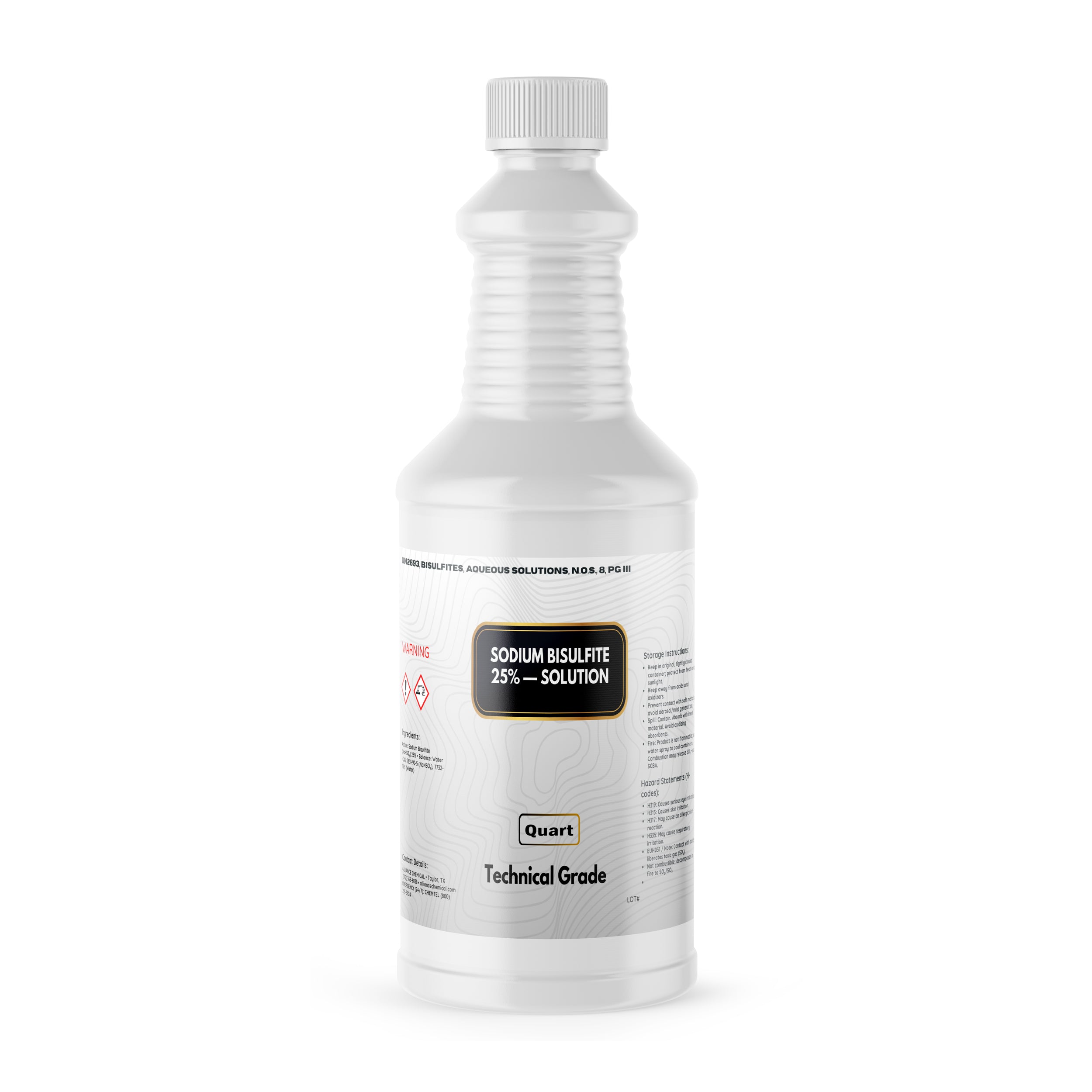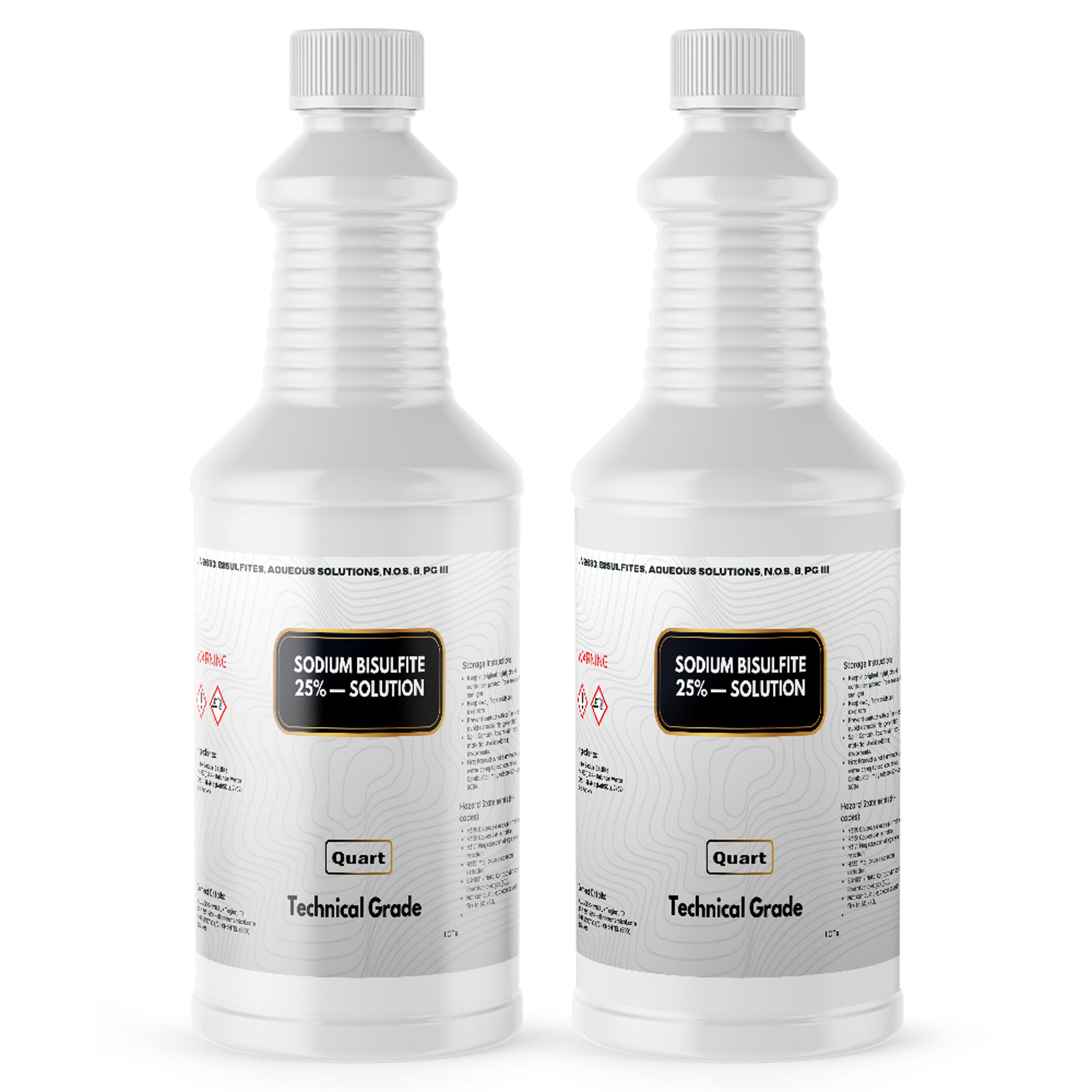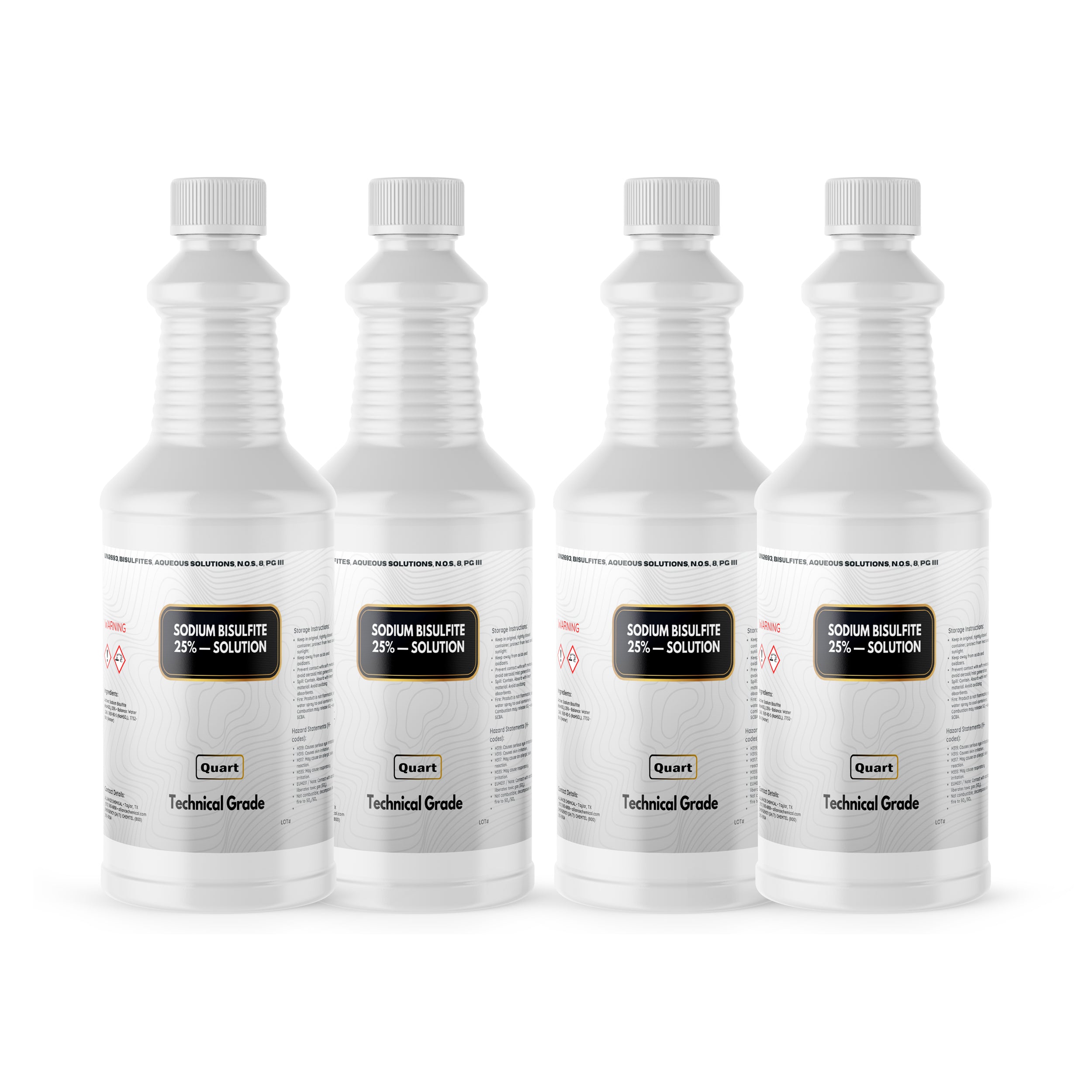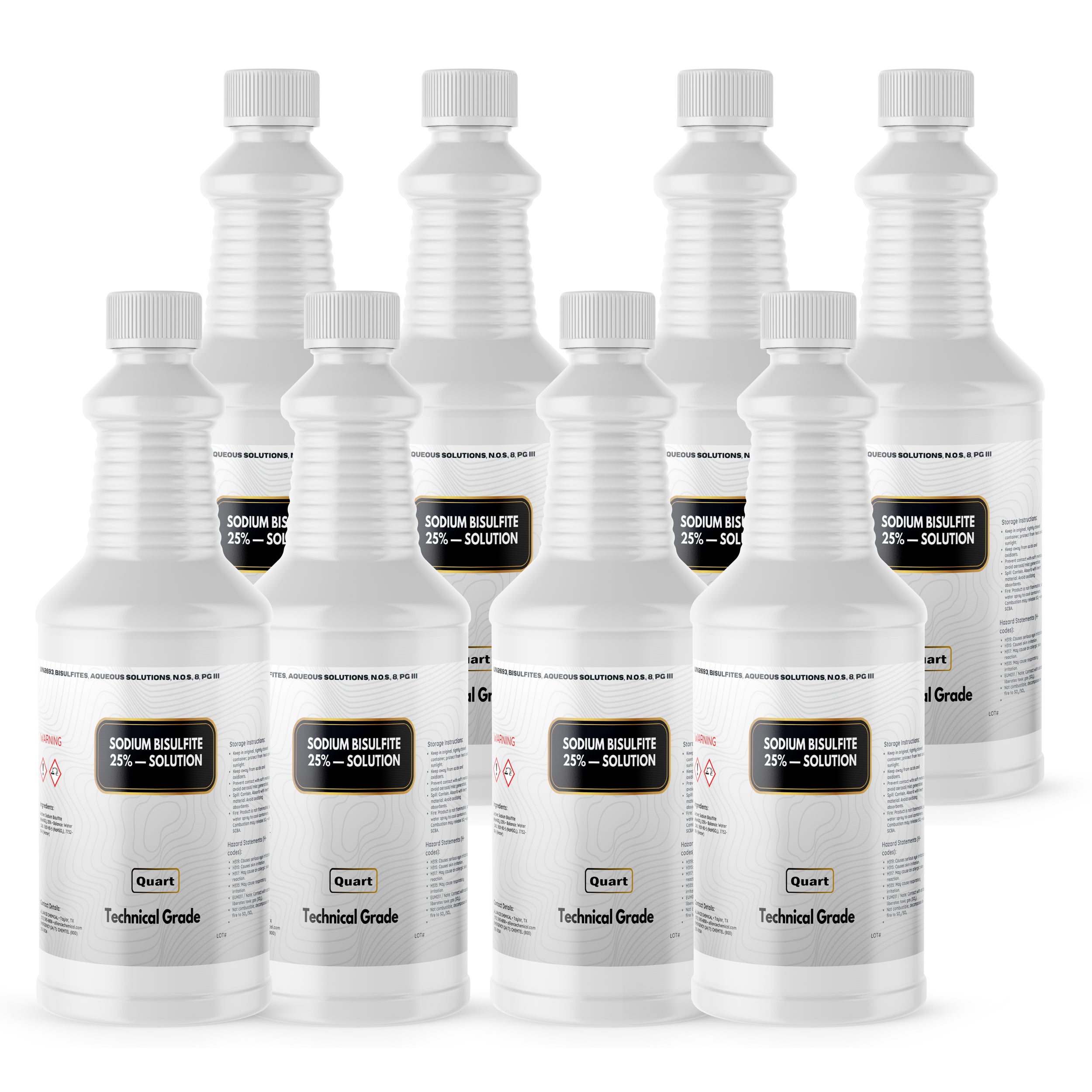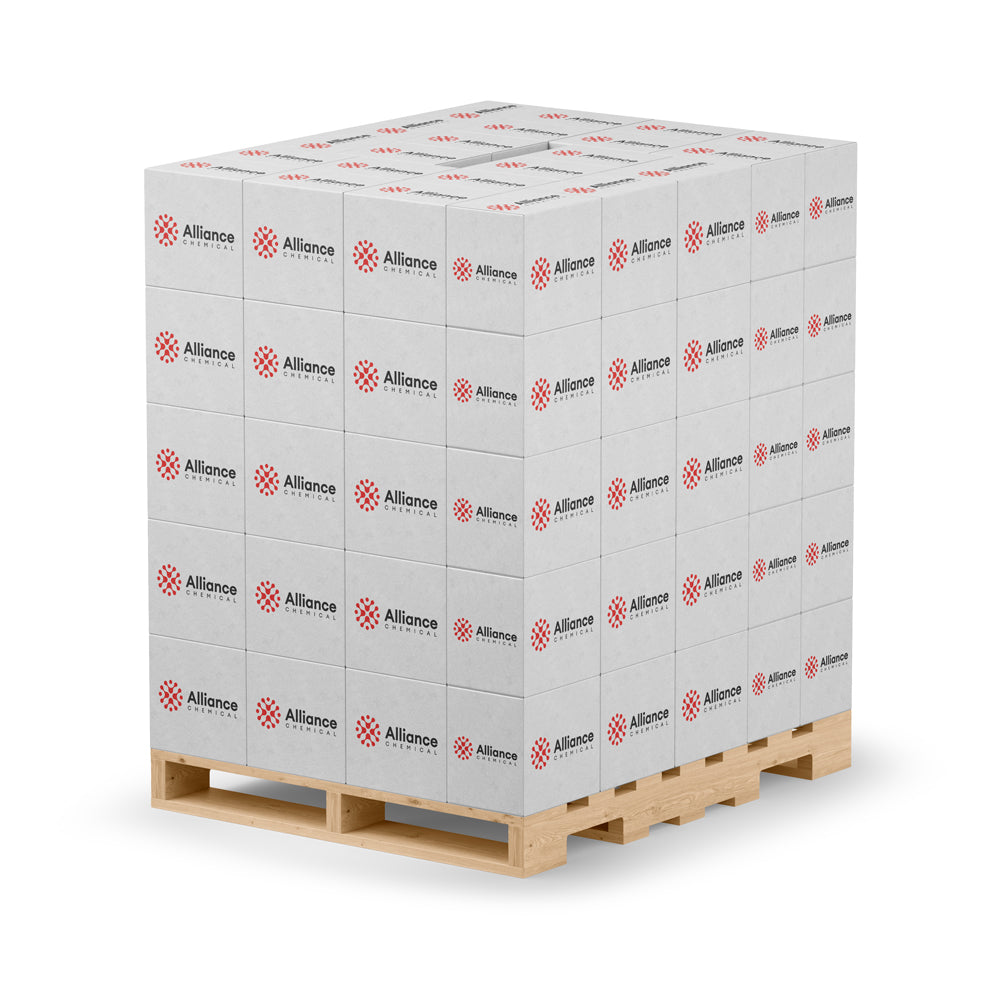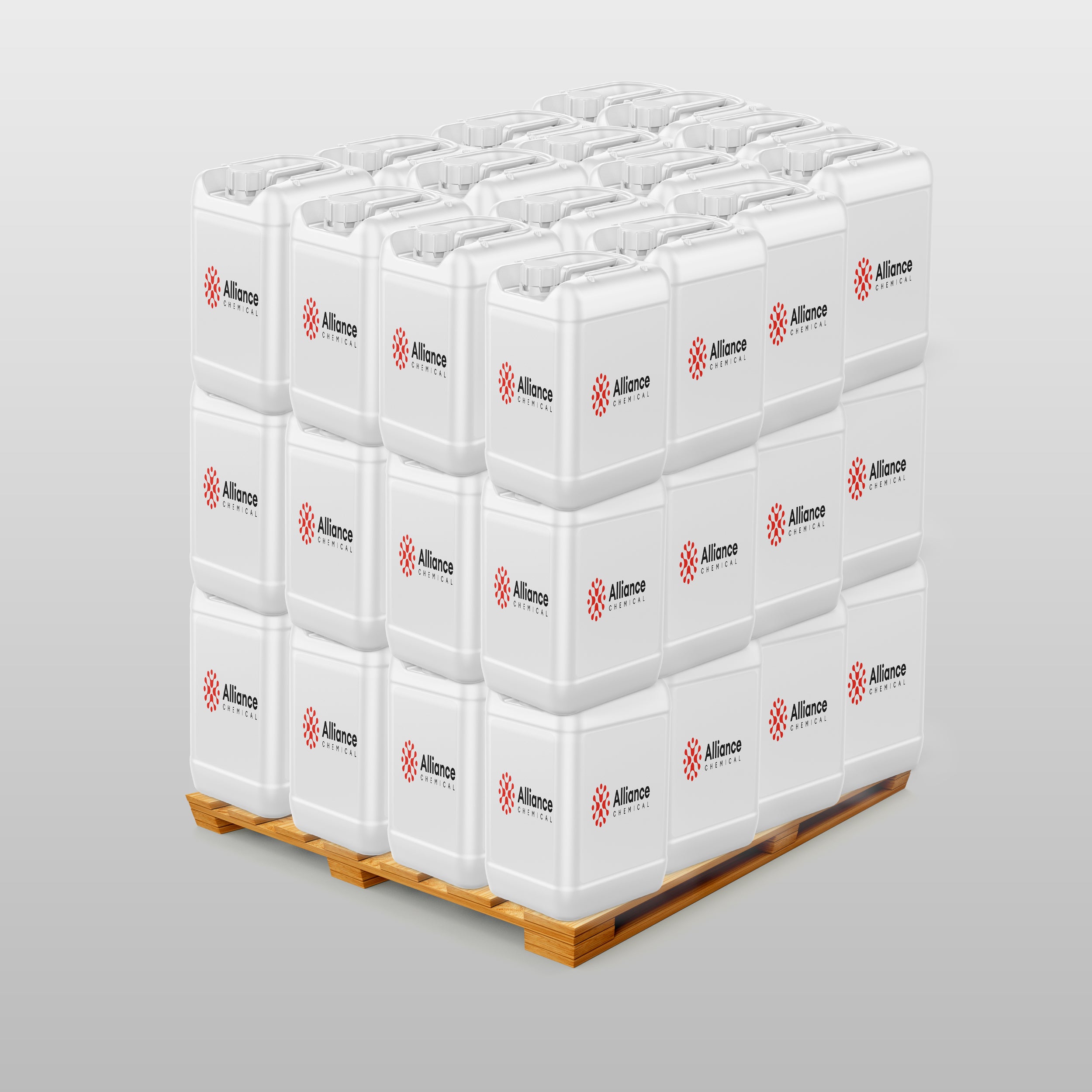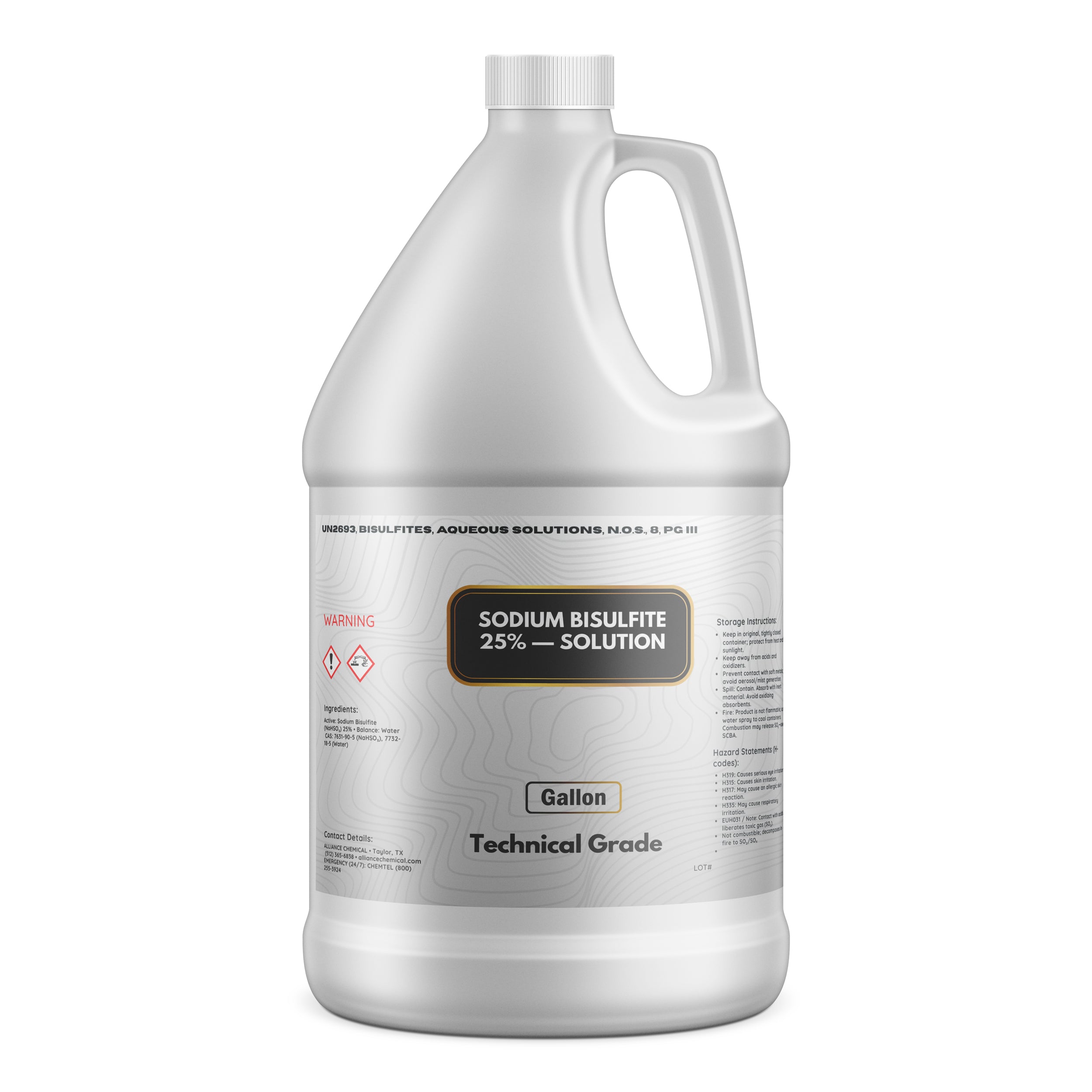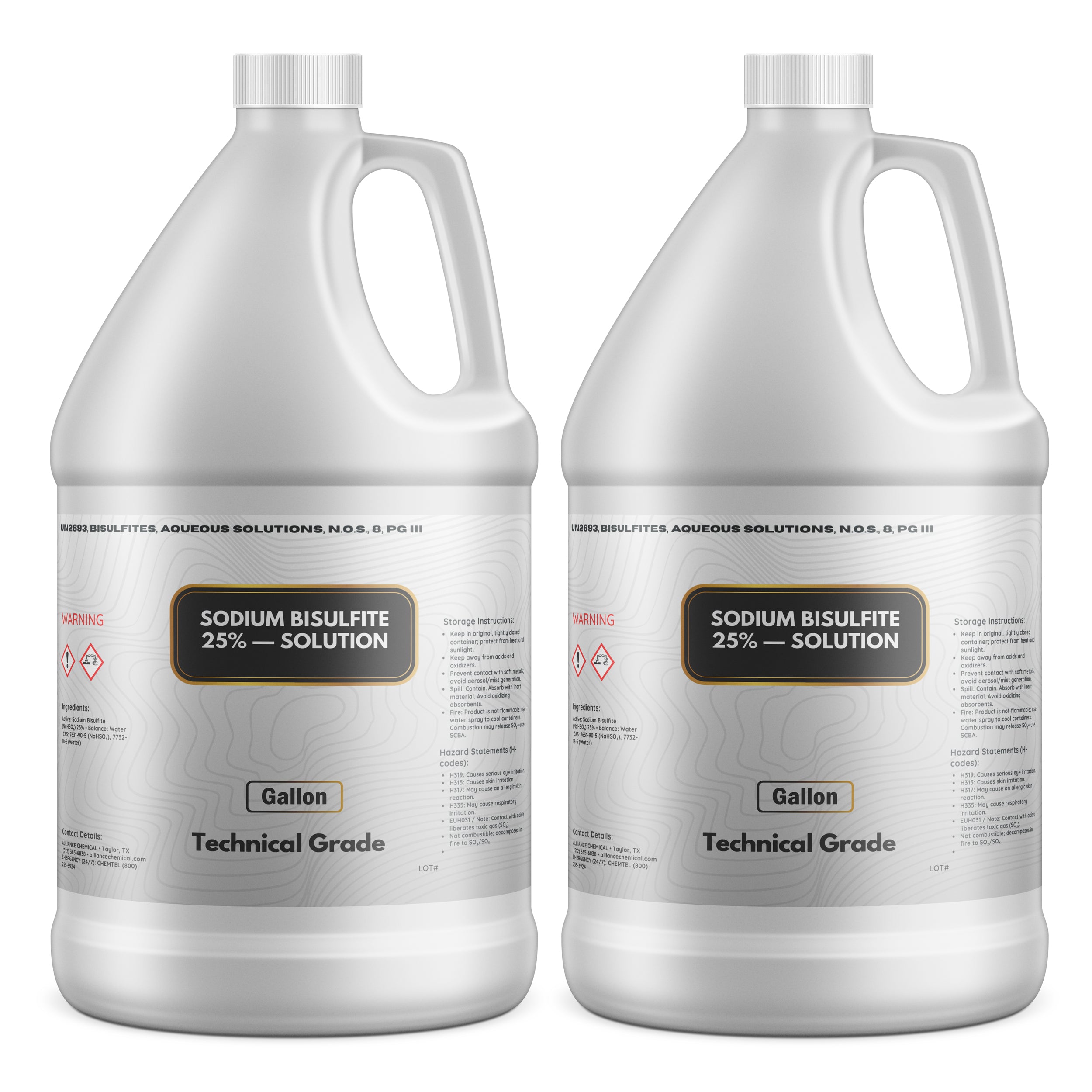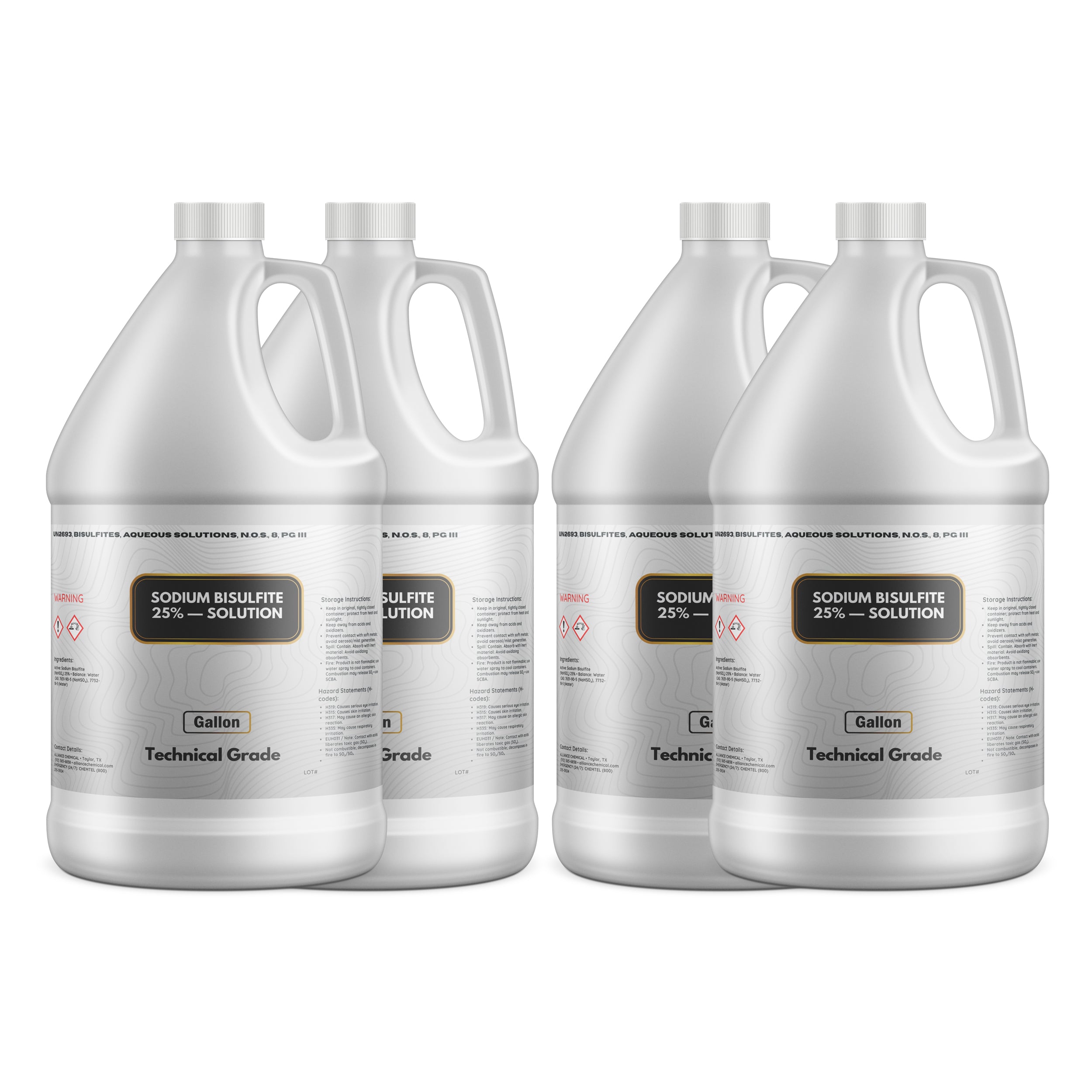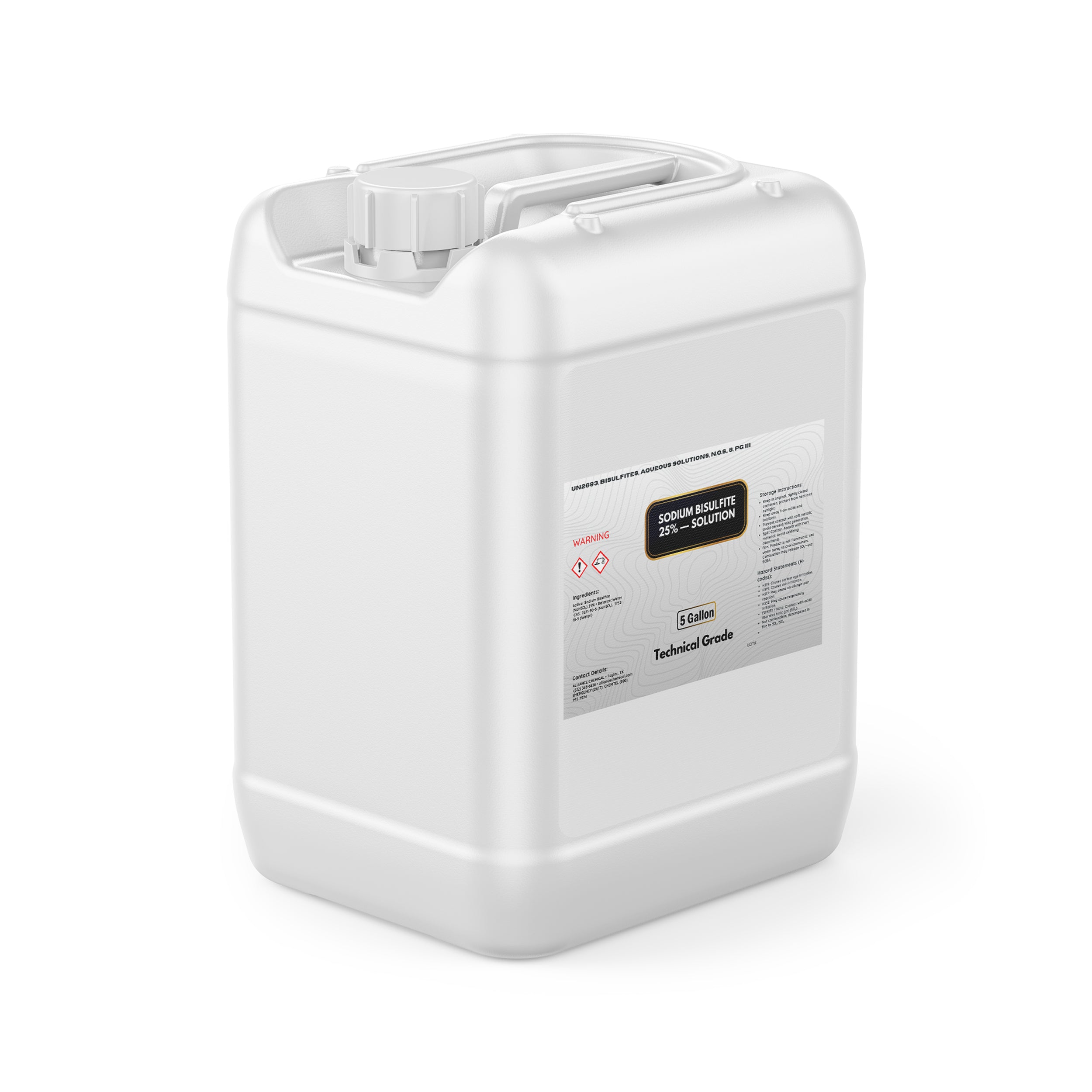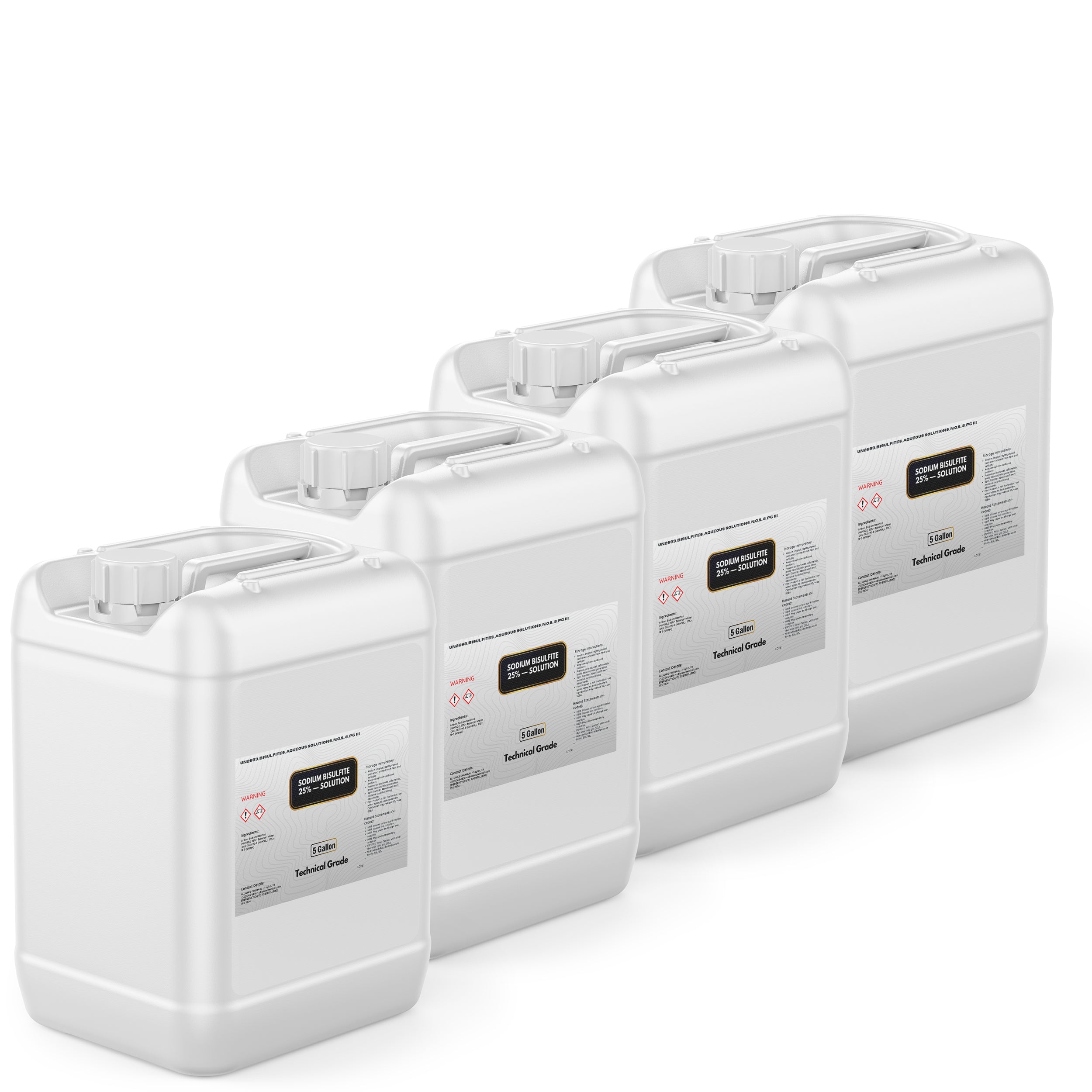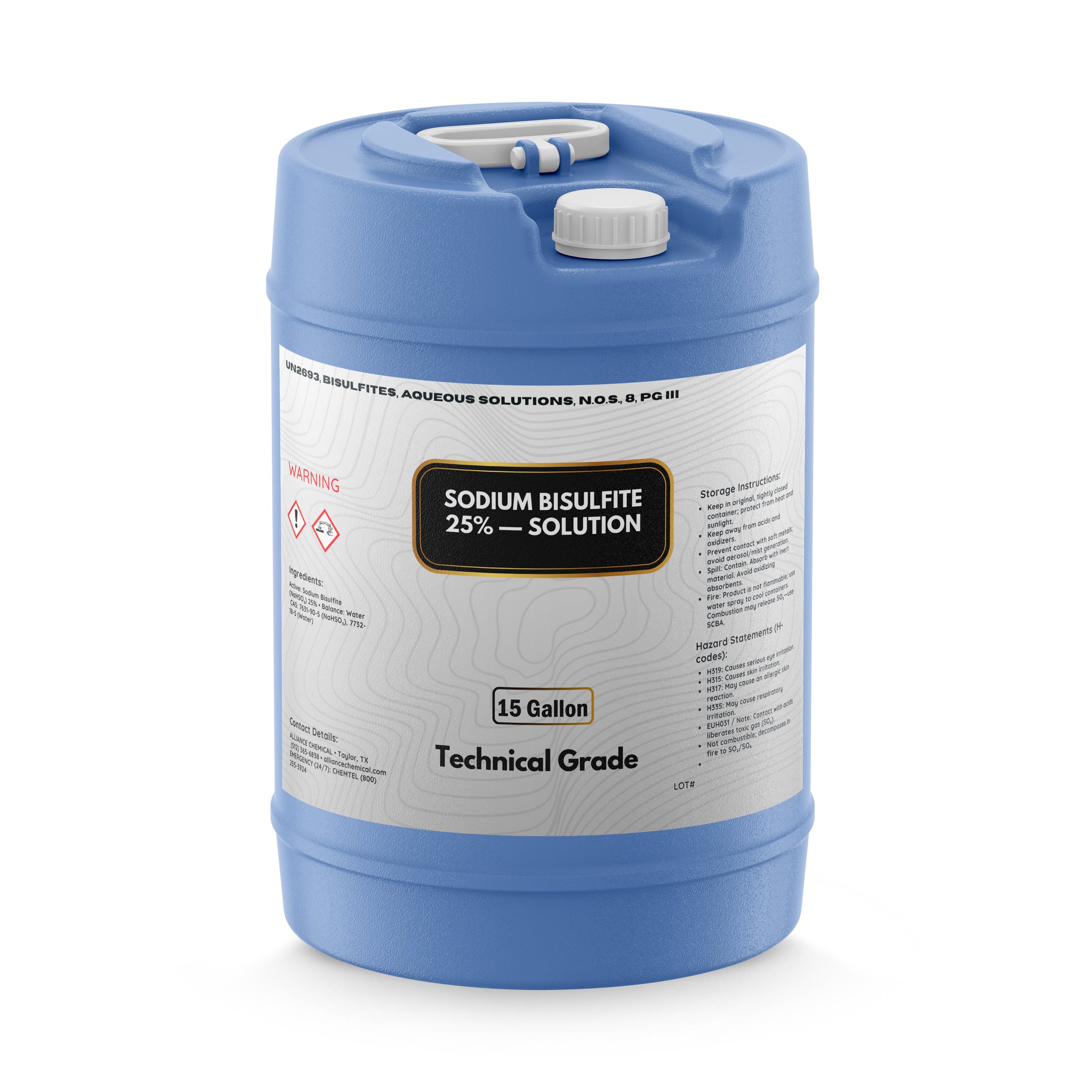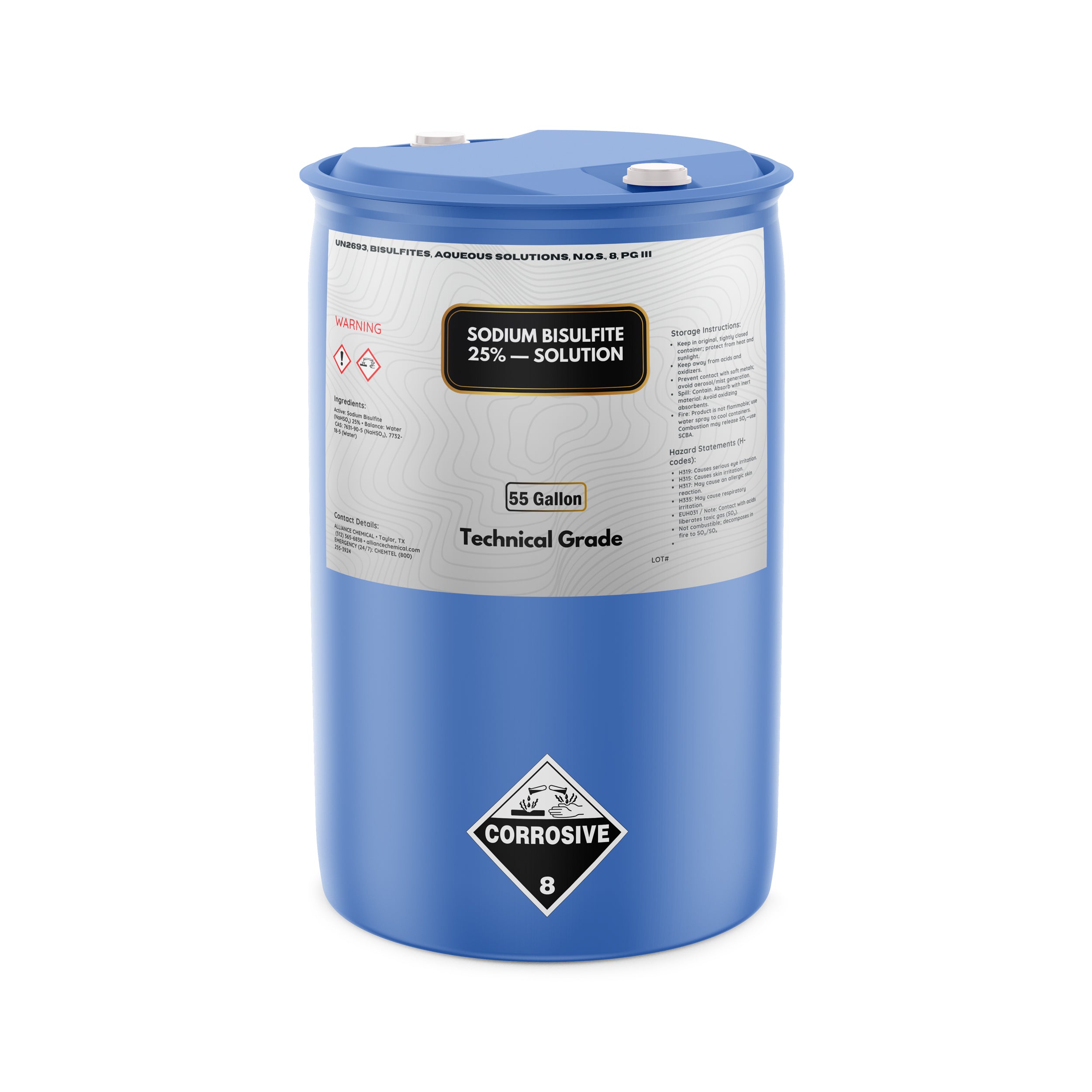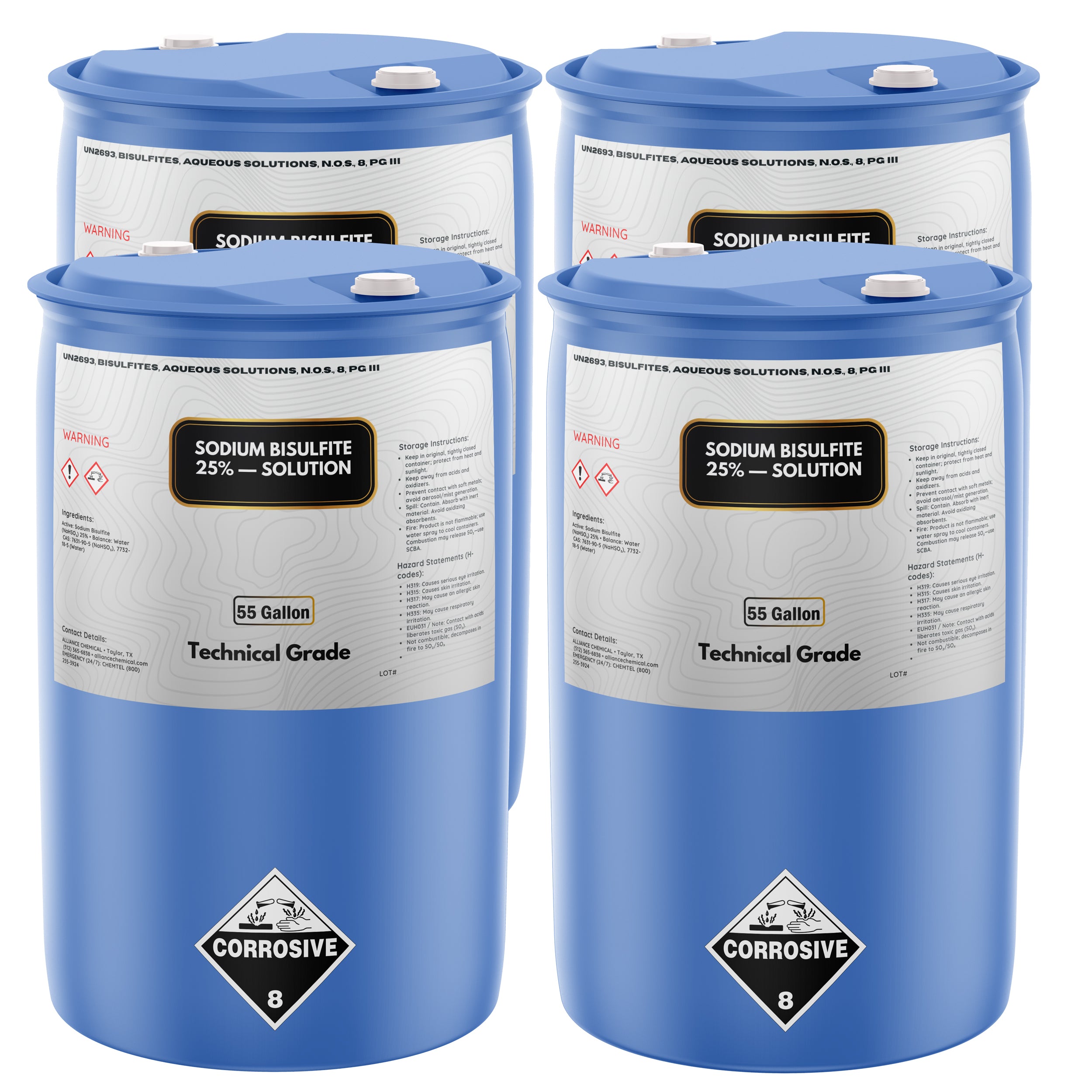Sodium Bisulfite 25% Solution – Technical Grade (NaHSO3)
Category : Salts
$2,030.45
Unit price
Quantity
Ask a question
Product Overview
Sodium Bisulfite 25% Solution – Technical Grade (NaHSO3) is a robust reducing agent and antioxidant used across industrial and laboratory settings to control oxidation states, preserve sensitive materials, and participate in a variety of chemical processes. The product is a 25% w/w NaHSO3 solution in water, designed for reliable performance under inert storage conditions to minimize premature oxidation. Its technical grade designation ensures consistent composition suitable for non-pharmaceutical, non-food applications, with attention to low heavy metal content to meet regulatory and process requirements. Typical assay results (min 24%, max 26%, typical 25%) are verified by titration with standardized NaOH, ensuring traceable quality for process control and quality assurance programs.
The solution supports water treatment, textile processing, chemical synthesis, and analytical work by delivering controlled reducing capacity and reliable antioxidant activity. Compliance with industry testing standards is demonstrated by a comprehensive set of analytical parameters, including APHA/Hazen color assessments, detailed ICP-OES/ICP-MS impurity profiles, and strict pH control (approximately 4.5–5.5 at 25°C). Storage under inert conditions is recommended to limit oxidation, preserving efficacy over the product’s shelf life. This combination of specification-driven reliability and documented test methods aligns with stringent industrial requirements and quality management expectations.
Key Properties
- Property Name: Assay wt %
- Chemical Formula: NaHSO₃
- Molecular Weight: 104.06 g/mol
- Boiling Point: Not specified; decomposes above 100°C
- Specific Gravity: 1.13 (typical) at 20°C; range 1.10–1.15
- Color (APHA): 12 (typical); max 20
- Residue After Ignition: max 0.05% (typical 0.01%)
- Chloride (Cl): max 25 ppm (typical 10 ppm)
- Nitrate (NO₃⁻): max 20 ppm (typical 5 ppm)
- Ammonium (NH₄⁺): max 5 ppm (typical 1 ppm)
- Sulfate (SO₄²⁻): max 100 ppm (typical 20 ppm)
- Phosphate (PO₄³⁻): max 10 ppm (typical 2 ppm)
- Arsenic (As): max 0.5 ppm (typical 0.1 ppm)
- Heavy Metals (as Pb): max 2 ppm (typical 0.5 ppm)
- Iron (Fe): max 5 ppm (typical 1 ppm)
- Copper (Cu): max 1 ppm (typical 0.2 ppm)
- Manganese (Mn): max 1 ppm (typical 0.2 ppm)
- Nickel (Ni): max 1 ppm (typical 0.2 ppm)
- Lead (Pb): max 2 ppm (typical 0.5 ppm)
- Zinc (Zn): max 5 ppm (typical 1 ppm)
- Aluminum (Al): max 2 ppm (typical 0.5 ppm)
- Chromium (Cr): max 1 ppm (typical 0.2 ppm)
- Calcium (Ca): max 200 ppm (typical 80 ppm)
- Magnesium (Mg): max 200 ppm (typical 80 ppm)
- Sodium (Na): max 8,000 ppm (typical 3,200 ppm)
- Potassium (K): max 2,000 ppm (typical 800 ppm)
Common Applications
- Water Treatment: Reducing agent to dechlorinate and control oxidation states in industrial and municipal water treatment processes.
- Food Preservation: Acts as a preservative in select products; compliance with testing and regulatory standards when applicable for non-pharmaceutical, non-food-grade usage.
- Chemical Intermediate: Serves as a precursor in synthesis of dyes, dyes-intermediates, and pharmaceuticals in certain controlled environments.
- Analytical Reagent: Used in redox titrations and as a reducing agent in various analytical procedures to ensure stable, repeatable results.
- Textile Processing: Utilized in bleaching and dyeing processes to reduce color and improve fabric quality under controlled process conditions.
- Industrial Redox Processes: Supports multiple redox-based operations where controlled sulfurous speciation is required.
Safety Precautions
Storage and handling should occur in a well-ventilated area, away from direct sunlight, with containers made of HDPE or glass to minimize material interactions. Maintain sealed containers with minimal headspace to reduce oxidation; use inert gas purge if high oxidation risk is present. Appropriately rated PPE is required, including chemical-resistant gloves, splash goggles, and a lab coat. Always store away from strong oxidizing agents and acids, and ensure proper ventilation during transfer and handling to prevent inhalation exposure.
In case of exposure, consult the Safety Data Sheet (SDS) and follow standard emergency procedures: for eyes, rinse with water for several minutes; for skin, wash with soap and water and seek medical advice if irritation persists; for inhalation, move to fresh air and seek medical attention if breathing is compromised; for ingestion, rinse mouth and do not induce vomiting. Transport is indicated as UN 1760, Corrosive liquid, n.o.s., Class 8, Packing Group II, following appropriate regulatory guidelines. Always review the SDS before use and comply with local, regional, and international regulations.
Benefits
✔ High-purity, 25% w/w NaHSO₃ solution – Reliable reducing capability with tight specification control for consistent process performance.
✔ Low heavy metal content – Meets common regulatory and quality requirements for water treatment, textiles, and analytical applications.
✔ Documented QC and test methods – Assay by titration, APHA color assessment, and ICP/OES/ICP-MS impurity profiling for traceability.
✔ Inert-storage stability – Maintained under inert atmosphere to minimize oxidation and extend shelf life.
| Property | Value |
|---|---|
| Molecular Weight | 104.06 g/mol |
| Formula | NaHSO3 |
| Assay | 25% |
| Grade | Technical |
| Flash Point | Not applicable (aqueous solution; not classified as flammable) |
| Form | Liquid |
| Solubility | Soluble in water and alcohol |
| Appearance | Clear, colorless to pale yellow liquid |
| Specific Gravity | 1.22 |
| Industry | Industrial, Environmental, Wastewater |
$2,030.45
Unit price
Compare Products
| Price |
|---|
| SKU |
| Rating |
| Discount |
| Vendor |
| Tags |
| Weight |
| Stock |
| Short Description |


